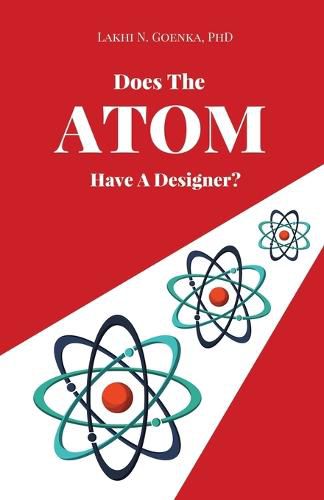Readings Newsletter
Become a Readings Member to make your shopping experience even easier.
Sign in or sign up for free!
You’re not far away from qualifying for FREE standard shipping within Australia
You’ve qualified for FREE standard shipping within Australia
The cart is loading…






This title is printed to order. This book may have been self-published. If so, we cannot guarantee the quality of the content. In the main most books will have gone through the editing process however some may not. We therefore suggest that you be aware of this before ordering this book. If in doubt check either the author or publisher’s details as we are unable to accept any returns unless they are faulty. Please contact us if you have any questions.
"Does the Atom have Designer?" is a first-of-its-kind analysis that critically examines if the Atom, with its related Quantum Physics, arose simply from random events following the Big Bang. This book, written by a secular researcher searching for answers, examines in depth quantum behaviors such as quark-gluon interactions within the atomic nucleus, and electron-photon interactions within atomic orbitals, as well as their role in realizing the many functionalities of the Atom.
Aristotle's four causes are used to investigate the Why Questions to explore the causality of the Atom. The answer to the question: "Does your kitchen table have a Designer?" does not require a Scientific or a Mathematical explanation; it requires a Logical one. Aristotle's theory of causality was developed to show that four related causes (or explanations) are needed to explain change in the world: a material, a formal, an efficient, and a final cause. A complete explanation of any material change will use all four causes. The Why Questions related to the Atom are investigated in great depth using this approach toward causality.
The commonly-cited objection: "Then who designed the Designer?" is also addressed in the book. The controversial and unverified Multiverse hypothesis, often used against a Design argument, is also discussed.
The book does not discuss any particular traditional religious belief, but it does define God in the context of the Atom and Quantum Physics.
And yes, your kitchen table does have a Designer.
Note: this is an argument based on Design, and not on fine tuning.
$9.00 standard shipping within Australia
FREE standard shipping within Australia for orders over $100.00
Express & International shipping calculated at checkout
This title is printed to order. This book may have been self-published. If so, we cannot guarantee the quality of the content. In the main most books will have gone through the editing process however some may not. We therefore suggest that you be aware of this before ordering this book. If in doubt check either the author or publisher’s details as we are unable to accept any returns unless they are faulty. Please contact us if you have any questions.
"Does the Atom have Designer?" is a first-of-its-kind analysis that critically examines if the Atom, with its related Quantum Physics, arose simply from random events following the Big Bang. This book, written by a secular researcher searching for answers, examines in depth quantum behaviors such as quark-gluon interactions within the atomic nucleus, and electron-photon interactions within atomic orbitals, as well as their role in realizing the many functionalities of the Atom.
Aristotle's four causes are used to investigate the Why Questions to explore the causality of the Atom. The answer to the question: "Does your kitchen table have a Designer?" does not require a Scientific or a Mathematical explanation; it requires a Logical one. Aristotle's theory of causality was developed to show that four related causes (or explanations) are needed to explain change in the world: a material, a formal, an efficient, and a final cause. A complete explanation of any material change will use all four causes. The Why Questions related to the Atom are investigated in great depth using this approach toward causality.
The commonly-cited objection: "Then who designed the Designer?" is also addressed in the book. The controversial and unverified Multiverse hypothesis, often used against a Design argument, is also discussed.
The book does not discuss any particular traditional religious belief, but it does define God in the context of the Atom and Quantum Physics.
And yes, your kitchen table does have a Designer.
Note: this is an argument based on Design, and not on fine tuning.